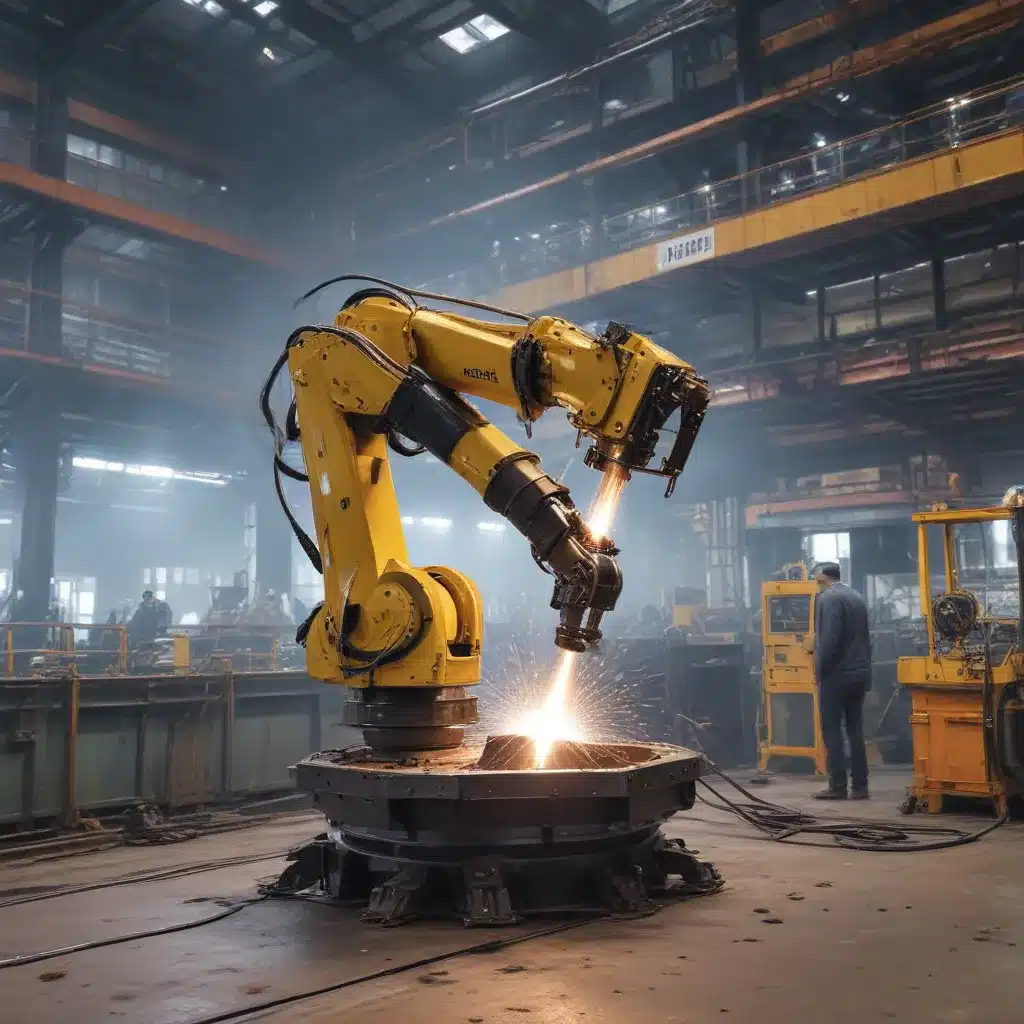
As an experienced welder and metal fabricator, I’ve seen firsthand how the industry has evolved over the years. One of the most exciting developments in recent times has been the growing integration of robotic welding in the shipbuilding sector. In this article, I’ll share my insights on how this innovative technology is transforming the way we approach welding and fabrication, particularly in the realm of shipbuilding.
Overcoming the Skilled Welder Shortage
Welding is a craft that requires immense skill, dexterity, and years of experience. Unfortunately, the industry has been grappling with a shortage of skilled welders, making it increasingly challenging to meet the rising demand for high-quality welds. This is where robotic welding has emerged as a game-changer.
By incorporating robotic welding systems into their operations, shipbuilders can leverage the precision and consistency that these advanced machines offer. Gone are the days when welding was solely dependent on the human touch. Robotic welding tools, equipped with cutting-edge sensors and programming, can perform repetitive and complex welding tasks with remarkable accuracy, speed, and efficiency.
One of the key benefits of robotic welding in shipbuilding is its ability to alleviate the burden on experienced welders. Rather than having them handle every weld, these skilled professionals can now focus their expertise on the more intricate and demanding projects, while the robotic systems handle the more repetitive and labor-intensive tasks.
Achieving Unparalleled Precision and Consistency
Consistency is paramount in the shipbuilding industry, where the strength and integrity of every weld can make the difference between a seaworthy vessel and a potential disaster. Robotic welding systems excel at delivering unwavering precision and uniformity, ensuring that each weld meets the highest standards.
Unlike manual welding, where variations in human technique and fatigue can lead to inconsistencies, robotic welders follow a pre-programmed path with meticulous attention to detail. The robots maintain a constant arc length, travel speed, and weld penetration, resulting in welds that are virtually indistinguishable from one another.
This level of precision not only enhances the structural integrity of the ship but also reduces the need for rework and quality control measures. Shipbuilders can rest assured that every weld, from the intricate joints in the hull to the robust connections in the superstructure, will meet or exceed industry specifications.
Boosting Productivity and Efficiency
One of the most remarkable advantages of robotic welding in shipbuilding is its ability to drive productivity and efficiency. These automated systems can work tirelessly, 24 hours a day, without the fatigue or breaks that human welders require.
By taking on the repetitive and labor-intensive welding tasks, robotic systems free up the skilled welders to focus on more complex and specialized work. This division of labor not only increases overall productivity but also allows for faster turnaround times on projects.
Moreover, robotic welding systems can be programmed to adapt to changing production demands, seamlessly transitioning between different weld types, materials, and part configurations. This flexibility ensures that shipbuilders can respond swiftly to market fluctuations and customer requirements, maintaining a competitive edge in the industry.
Ensuring Workplace Safety
Welding can be a hazardous profession, with risks ranging from burns and electric shocks to exposure to harmful fumes and radiation. By incorporating robotic welding into their operations, shipbuilders can significantly enhance the safety of their workforce.
Robotic systems are designed to handle the most dangerous aspects of the welding process, shielding human workers from the potential harm. These automated systems operate within carefully designed enclosures, complete with safety barriers and emergency stop mechanisms, ensuring that personnel are kept at a safe distance from the welding area.
Furthermore, the consistent and precise nature of robotic welding reduces the risk of accidents and injuries that can occur with manual welding. Welders no longer need to contend with the physical strain of holding heavy equipment or maintaining precise control over the welding torch, allowing them to focus on their tasks with greater focus and reduced fatigue.
Adaptability and Versatility
Shipbuilding is a dynamic industry, with constantly evolving design requirements and the need to accommodate a wide range of materials and components. Robotic welding systems have proven to be highly adaptable, capable of handling a diverse range of welding processes and applications.
From arc welding and MIG/TIG welding to laser and spot welding, these automated systems can seamlessly transition between different techniques to meet the specific needs of each project. This versatility allows shipbuilders to streamline their operations, reducing the need for multiple specialized welding stations and the associated training and maintenance requirements.
Moreover, robotic welding systems can be programmed to handle complex weld patterns and geometries, making them invaluable in the construction of intricate ship components, such as the hull, superstructure, and piping systems. By leveraging the flexibility of these automated tools, shipbuilders can unlock new design possibilities and push the boundaries of what’s achievable in their industry.
Embracing the Future of Welding in Shipbuilding
As I reflect on my own experiences in the field, it’s clear that robotic welding is revolutionizing the way we approach fabrication and welding in the shipbuilding industry. By overcoming the skilled welder shortage, enhancing precision and consistency, boosting productivity, and ensuring workplace safety, these automated systems are poised to play a crucial role in the future of this dynamic industry.
As we look ahead, I’m excited to see how the continued advancements in robotic welding technology will further transform the shipbuilding landscape. From the integration of artificial intelligence and machine learning to the development of even more versatile and user-friendly systems, the potential for innovation is truly limitless.
At The Weld Fab, we pride ourselves on staying at the forefront of these technological developments, always seeking to provide our clients with the most cutting-edge welding and fabrication solutions. Whether you’re a shipbuilder looking to streamline your operations or an aspiring metal fabricator eager to explore the possibilities of robotic welding, I encourage you to visit our website at https://theweldfab.com/ to learn more about how we can help you navigate the future of this dynamic industry.


